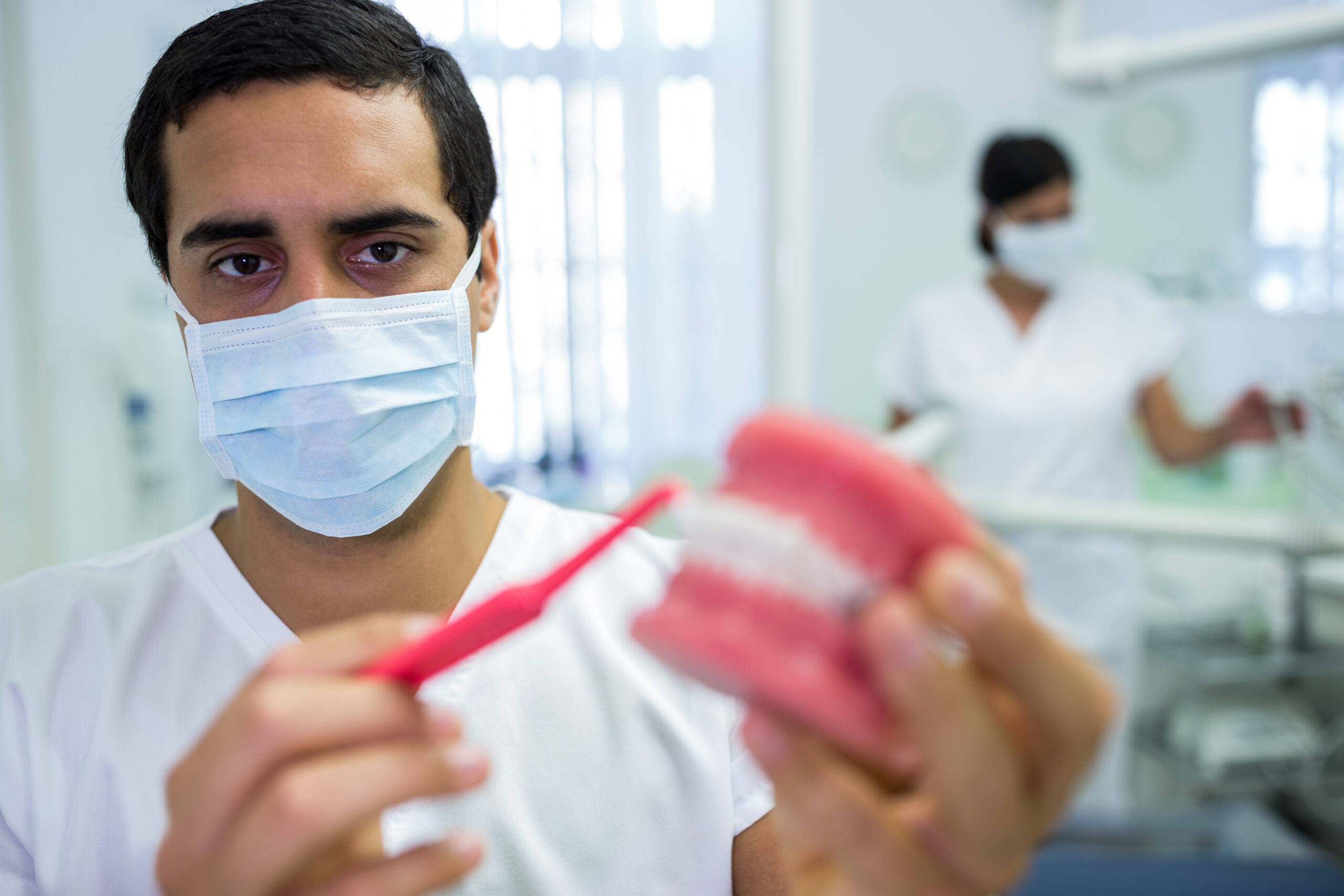The Correct Way to Brush Your Teeth – Advice from Your Dentist in Guildford Surrey
Brushing your teeth properly is one of the simplest and most effective forms of preventive dentistry. Yet at Surrey Dental Practice, we often see patients who brush every day but still struggle with dental plaque, tooth decay, or early gum problems. The truth is, brushing is not just about frequency – it’s about technique.
This guide explains the correct way to brush your teeth, helping you maintain good oral health and reduce the need for more complex treatments like endodontic treatment or restorative work in the future or even extraction and replacement of missing teeth
1. Choose the Right Tools for the Job
- Toothbrush: A soft-bristled toothbrush is ideal for removing dental plaque without damaging the enamel or gums.
- Toothpaste: Always use a fluoride toothpaste to protect against tooth decay.
- Electric toothbrushes can be particularly effective and make brushing easier for many patients.
2. Brush for Two Minutes, twice a Day
Dentists recommend brushing for two minutes – roughly 30 seconds per quadrant of your mouth – twice daily. This timing ensures you thoroughly clean all tooth surfaces and reduce the risk of gum disease.
3. Master the Correct Brushing Technique
- Hold your toothbrush at a 45-degree angle towards the gumline.
- Use small, gentle circular motions rather than aggressive scrubbing.
- Clean all surfaces:
-
- Outer surfaces
- Inner surfaces
- Chewing surfaces
- Don’t forget to gently brush your tongue to remove bacteria and freshen your breath.
- This technique is called “modified bass brushing technique”. You can always watch a video on you bit.ly/4gFACvC
Following this method is an essential part of gum disease prevention.
4. Be Methodical
Start brushing in the same place each time and move in a set order. This systematic approach ensures that no tooth is missed.
5. Maintain Your Toothbrush
Replace your toothbrush or electric brush head every three months, or sooner if the bristles are worn.

6. Electric Toothbrushing
- Effectiveness:
Most studies show that electric toothbrushes (especially oscillating-rotating or sonic ones) remove more plaque and reduce gum inflammation better than manual brushes, especially if someone’s technique with a manual brush isn’t ideal. - Ease of use:
They’re helpful for people who struggle with dexterity (e.g., older adults, kids, or people with arthritis) because the brush does most of the work. - Timer & pressure sensors:
Many electric brushes have built-in timers (2 minutes) and pressure sensors to prevent brushing too hard; both features improve brushing habits. - Heads & maintenance:
Replace the brush head about every 3 months (or sooner if the bristles splay out). - Technique:
You still need to guide the brush gently along the gumline and all surfaces of the teeth; don’t “scrub” like with a manual brush.
Why Technique Matters
Poor brushing habits can lead to tooth decay, gum inflammation, and costly restorative treatments. Regular routine dental check-ups combined with correct brushing will help detect problems early and keep your smile healthy.
For younger patients, our team also offers guidance on paediatric dental care, ensuring children learn proper techniques from the start.
Professional Support in Guildford
At Surrey Dental Practice, our experienced team is committed to patient education as well as treatment. If you are unsure about your brushing technique, we can demonstrate it during your next appointment.
We also provide full oral hygiene tips, professional dental cleanings, and personalised gum disease treatment options when needed.
Book Your Consultation Today?
To arrange a consultation with a Guildford dentist or our Dental Hygienist who can help you improve your oral care routine and reduce your risk of future problems, contact: